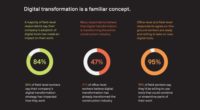E203–2013 is intended to be attached to an agreement at the time the agreement is executed. It consists of general provisions, including a purpose statement and definitions, that would not normally change as the project proceeds. It also provides a place for the parties to identify which party, if any, will be charged with digital data management or model management responsibilities. To the extent these responsibilities affect the scope of services, they are included as a part of the initial agreement.
Initiate a Discussion
The primary purpose is to initiate, at the outset of a project, a substantive discussion about the extent to which digital data and BIM will be used and how digital data and models can be used and relied upon. Once a general understanding is reached, the project participants use E203–2013 to document agreed-upon expectations regarding scope and anticipated authorized uses of digital data and BIM.
“The premise is that there will be a single version of E203–2013 negotiated for a project and that version will be included as an exhibit to each contract on the project,” says the guide.
E203–2013 then requires project participants, as soon as it is practical after execution of the agreement, to meet and decide upon the protocols for the development and use of digital data and BIM. Once agreed to, the protocols are “memorialized” in G201–2013 and G202–2013.
G201–2013 and G202–2013 are not expressly incorporated into the project participants’ agreements, however. The terms of the E203–2013, attached to each Project Participant’s agreement, require each party to follow the protocols once established and if updated.
The separation of the exhibit and protocols is a departure from the approach taken in E201–2007 and E202–2008, in which the detailed protocols are part of the exhibit. There are a number of benefits to this new approach, said Bomba. E203 no longer requires the project participants to negotiate and finalize the detailed digital data and modeling protocols at the same time they make their initial decisions regarding whether and how to use digital data and BIM.
By separating the protocols from the exhibit, participants are able to first discuss and document their general expectations. Down the road when it makes more sense, they can develop the protocols, added Bomba. Because the protocols set forth in G201–2013 and G202–2013 are not a part of the underlying agreement, they can be modified and adjusted as necessary without the need to separately and formally amend each party’s agreement, says the guide.
The digital practice documents are available in the latest version of AIA contract documents software, which is now compatible with Microsoft Office 2013 and Windows 8. ">Practice document samples are available.
The documents committee has no set time frame for updating the digital practice documents, but intends to monitor change in BIM practice to determine when a new set is needed. Forrest Lott, principal of Lott + Barber Architects, Savannah, Ga., and also a member of the task force, added: “We don’t have the answer to every situation but we have a pretty good framework to continue the discussion.”



Post a comment to this article
Report Abusive Comment